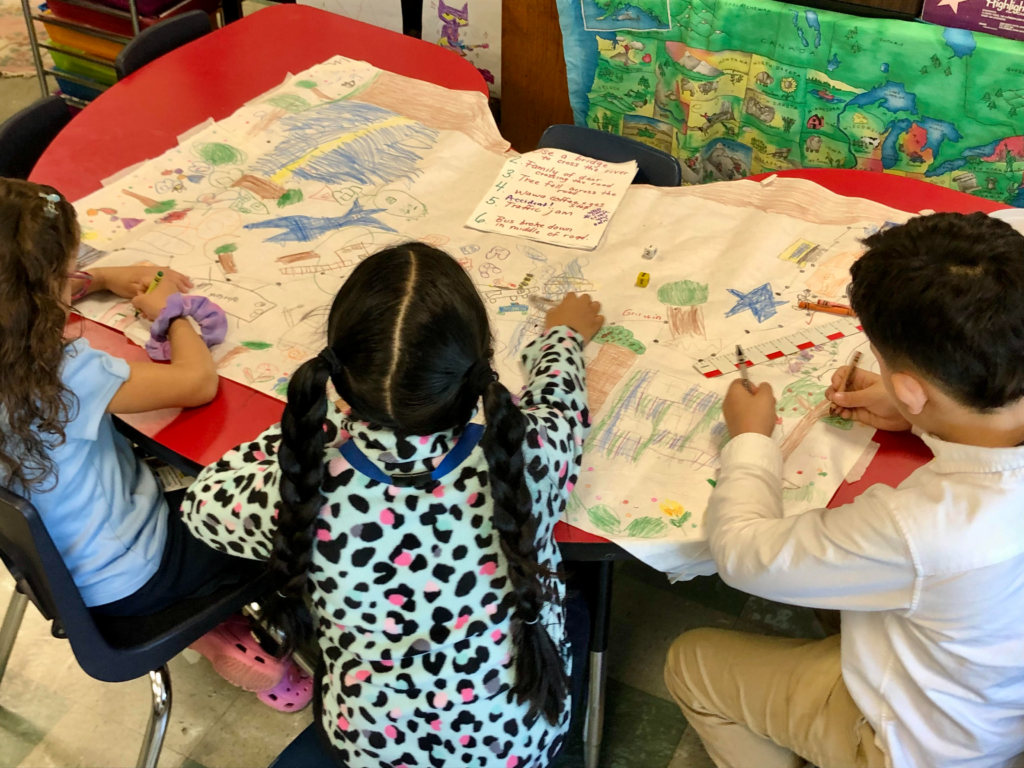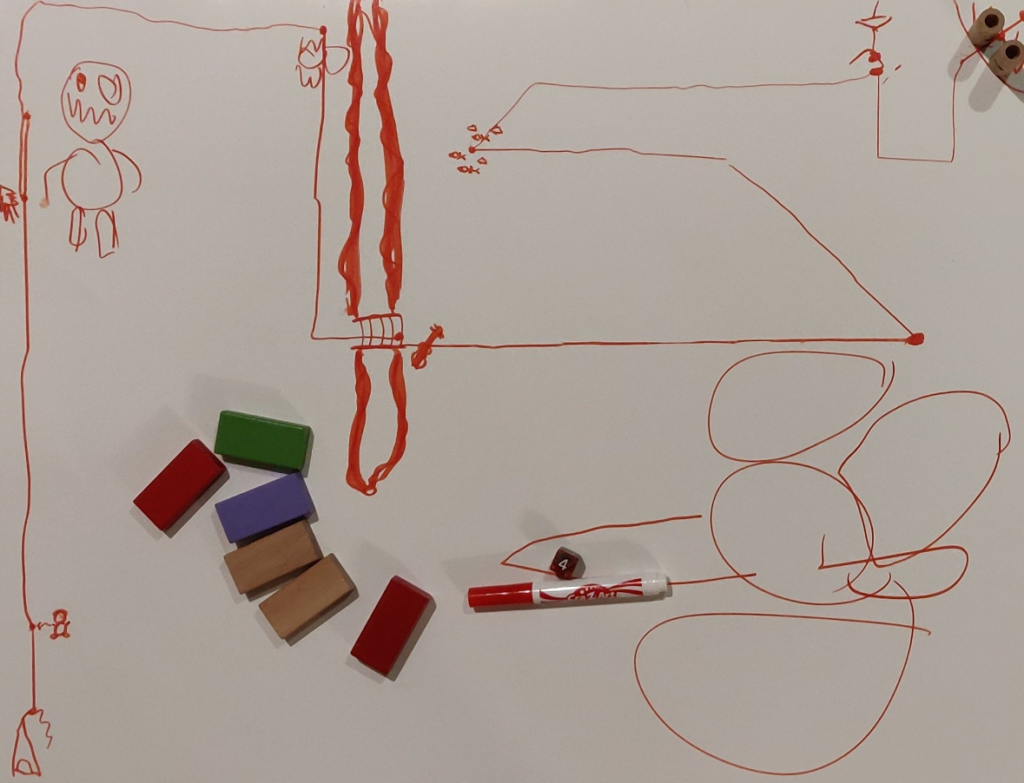Review of Whither and Whence, a TTRPG that teaches kids measuring!
Jump to:
Whither and Whence is great for kids ages 4-7 (and will teach math skills)
Whither and Whence is recommended for kids ages 4-7, and is a perfect first or early TTRPG to play with young ones. The mechanics are clear and intended to be read by a game facilitator, and the actual rolling and measuring mechanics are made with the intention of practicing counting and measuring, so it’s OK if kids are still learning those skills going in.
This game is a system, so you can make the story however you want and have control over the tone, themes, and content so you can gear them towards your particular kid’s needs and interests.

Whither and Whence is set with your characters on a journey

Whither and Whence can be set in any world or scenario, as long as it follows along some kind of journey. This setting flavors the descriptions and challenges or events that you’ll encounter on the way to your destination.
One of the recommended examples is to have characters on a trip to Granny’s house! They need to navigate through the woods to find their way to some nice hugs and a tray of fresh cookies. This journey may be full of fairy rings, a big bad wolf, troll bridges, or a magical tree that players find along the way.
That’s easily adjustable too. For the games that we played (and there was more than one), we set our story in the world of Hilda! In our game, we climbed a mountain, found a woodland spirit, and helped a lost troll get home to their mama.
Your character in Whither and Whence
Whither and Whence actually has two main characters. One is named Whither, and the other is named Whence! They don’t have stat sheets or a bunch of numbers and details to keep track of, so they are themselves and who you decide to make them within the story.
That said, like with the setting, you can also change this pair to another iconic duo. In our game, we played in the world of Hilda, so our characters were Hilda and Twig instead. Kiddo played Hilda because she’s awesome, and I played Twig as the facilitator and focused more on following Hilda around and supporting my kid’s fun stories.
It was a lot of fun with that freedom and openness, and it was nice not having to need a character sheet for my kid to rely on because the mechanics picked up all the number bits on their own.
Learning math skills through mechanics in Whither and Whence
Whither and Whence’s core mechanic is built around using non-standard units of measurement. So, this means saying like… 5 pennies long or 3 building blocks distance. This is a Common Core Standard skill (1.MD.2) that builds a foundation for understanding common units of measurement (like a foot, meter, or mile) later.

You choose a unit of measurement that you’ll use. For us, this was rectangular wooden blocks from a building block set. You could also use Lego or Duplo blocks, popsicle sticks, spoons, playing cards, etc.
Next, you take turns rolling to see how many units of measurement you get to count out and describe what happens when you get there (in our game, there was a fair bit of running from creatures in the woods until we found the baby troll). You’ll continue this until you get to your final destination and see how the story ends!
It ended up being a fantastic frame for practicing counting and measurement, and my kid wanted to play again and again until we had to stop for mealtime! The whole thing was learning, and because it was set up as a game, he didn’t want to stop practicing.
What did my kid think about Whither and Whence?
My kid really loved this game.
Like I said before, he wanted to play it over and over again, and he loved getting to RP as Hilda. After a while too, he even asked if he could roll a bigger die so he could get more blocks each turn, and I happily obliged by swapping up to a d10 and getting him to practice counting and measuring larger quantities, which he managed very well.
He liked getting to count and draw on the map, the mechanics were manageable and he could handle them on his own, and the game base and the flexibility of the journey allowed for a lot of creativity. He’s asked a few times to play again since we ran the playtest, so it gets the kiddo’s seal of approval!
Overall thoughts on Whither and Whence
I know my kid had a great time with this game, and I honestly did too. It was really easy for me to track and run because my kid didn’t need me to step in at any point in the gameplay (this is a great example of how mechanics do not have to be super complicated to be good), and we got to focus on having a fun story together. I enjoyed playing this with him and am glad he had a fun time learning as well!
Find a copy of Whither and Whence
You can find a copy of Whither and Whence here on the Open Story Games itch.io page!
If you liked this post, make sure to subscribe to the TTRPGkids monthly newsletter to stay up to date on the latest reviews, tips and tricks, game and podcast list updates, and more! Thank you for playing tabletop RPGs with your kids and sharing this awesome hobby with the next generation!



It makes me so happy to know how much you and kiddo enjoyed this game! Thank you for playing it, reviewing it, and sharing the love.
What a great idea to switch the die size for a larger one when he wanted to get more blocks! I started with a d6 because almost everyone has one, but using other dice has lots of benefits: familiarity with dice for future gaming, counting to higher numbers, and maybe even some adding if you played with 3d4 or 2d10 or something like that.
You’ve got me mulling over new ideas for my game, and I can’t think of a better way to start my day.
I was happy to check this out and kiddo had a wonderful time too! It’s a great system, and I think the ease of being able to build off of it is a huge strength and makes it really customizable to the kid. I am really excited to hear what you’re thinking about for your next game!!
Thanks so much!
I’ve got a lot of ideas brewing, so we’ll see which ones work themselves out sooner rather than later.